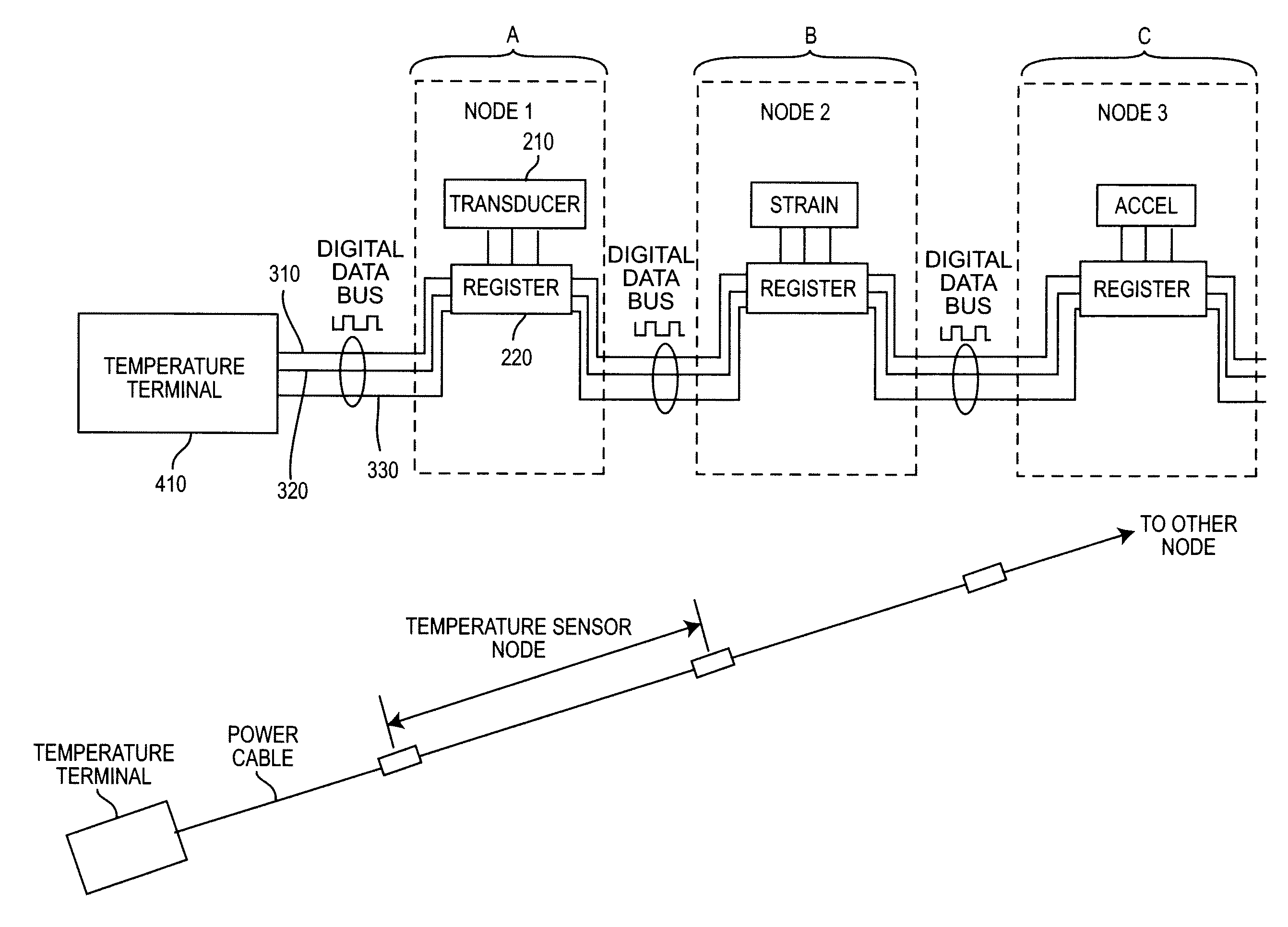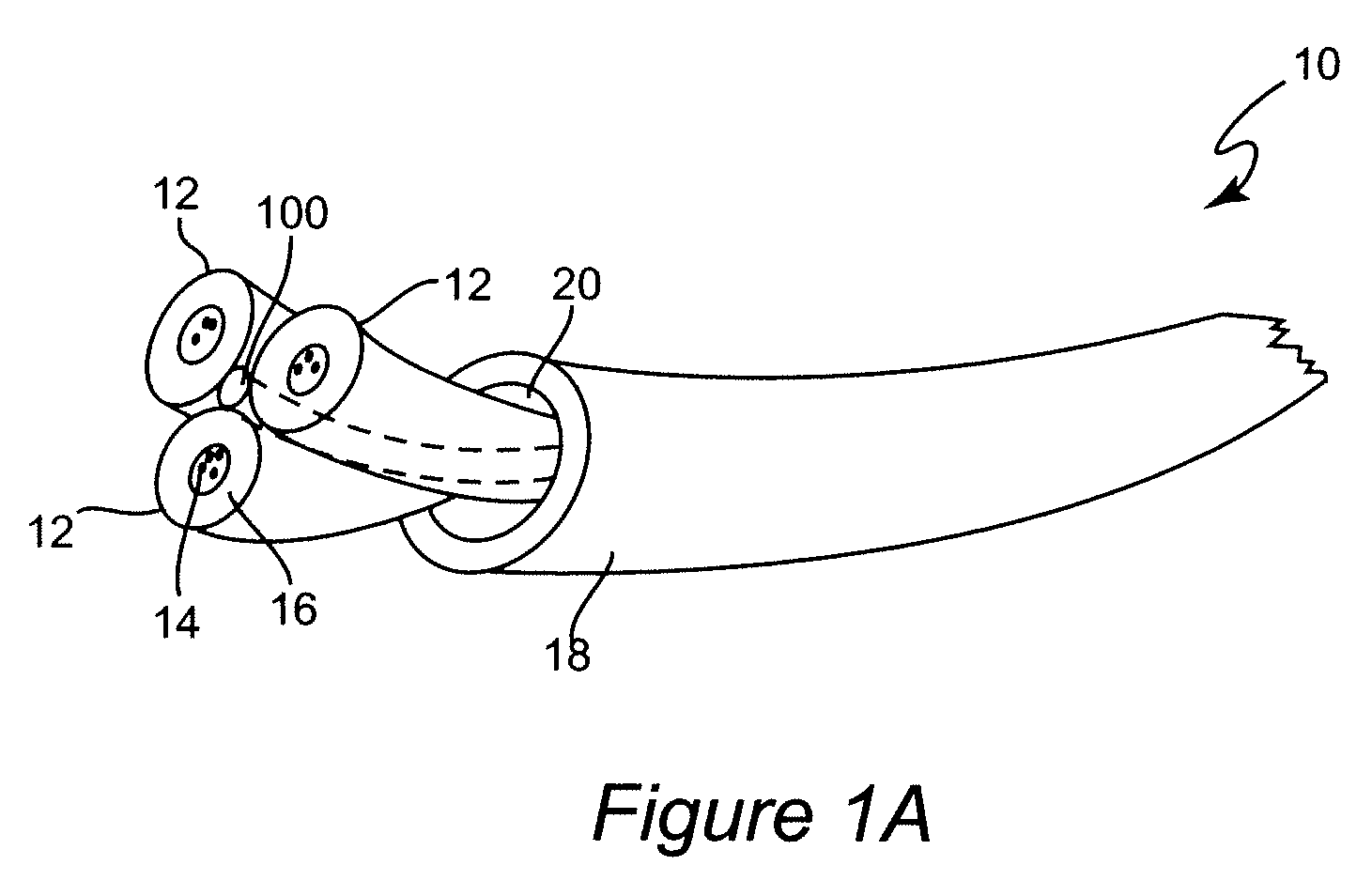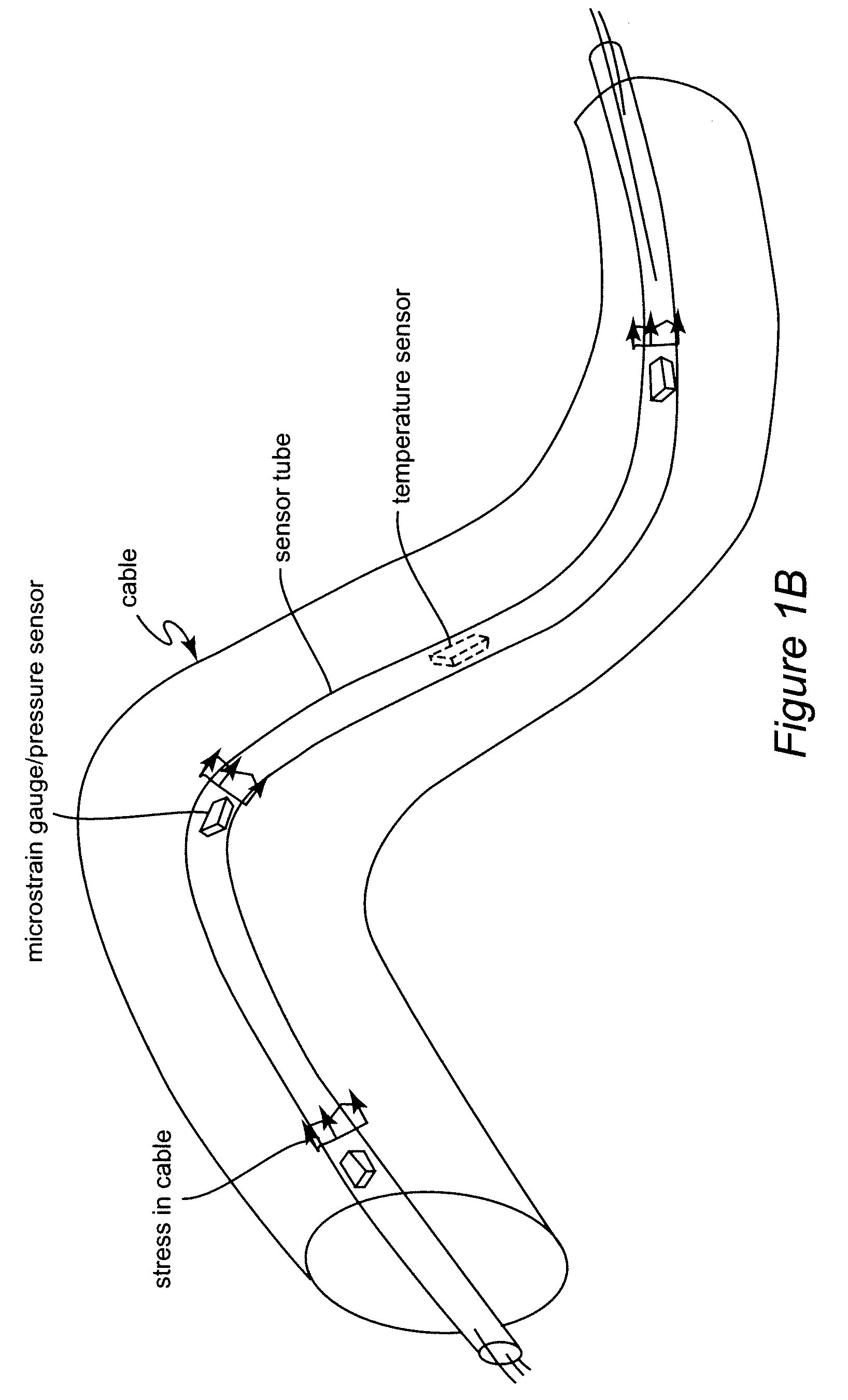Embedded power cable sensor array
a technology of power cable and sensor array, which is applied in the direction of cables, insulated conductors, instruments, etc., can solve the problems of limited current carrying capacity (sometimes referred to as “ampacity”) of electrical power cables, conservative design and unused capacity, and internal short-circuiting and cable failure. achieve the effect of reducing the curren
- Summary
- Abstract
- Description
- Claims
- Application Information
AI Technical Summary
Benefits of technology
Problems solved by technology
Method used
Image
Examples
Embodiment Construction
[0022]Referring now to the drawings, and more particularly to FIG. 1A, there is shown a section of an electrical power delivery cable 10 (hereinafter sometimes simply “cable”) with embedded sensors in accordance with the invention. The cable 10 includes a plurality (generally at least two but usually three, as shown, but as many such wires as desired may be included) of insulated wires 12 where the conductor 14 (which may be solid or comprised of a plurality of smaller strands) is generally of copper or aluminum, copper plated or sheathed aluminum or the like but the material chosen is of no importance to the successful practice of the invention. Each of these wires 12 includes electrical insulation layer 16 covering conductor 14 and the illustration thereof should be considered as including any additional structural feature(s) that may be desired for the particular application in which cable 10 is to be employed. Such additional structural features may include, without limitation, ...
PUM
 Login to View More
Login to View More Abstract
Description
Claims
Application Information
 Login to View More
Login to View More - R&D
- Intellectual Property
- Life Sciences
- Materials
- Tech Scout
- Unparalleled Data Quality
- Higher Quality Content
- 60% Fewer Hallucinations
Browse by: Latest US Patents, China's latest patents, Technical Efficacy Thesaurus, Application Domain, Technology Topic, Popular Technical Reports.
© 2025 PatSnap. All rights reserved.Legal|Privacy policy|Modern Slavery Act Transparency Statement|Sitemap|About US| Contact US: help@patsnap.com



